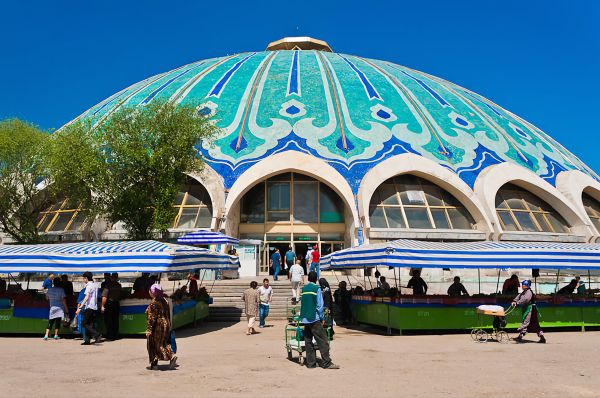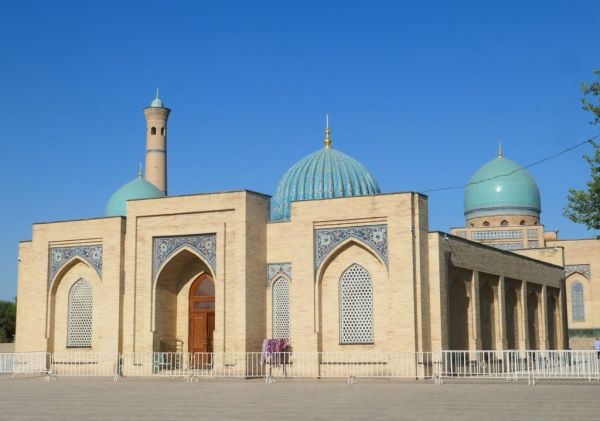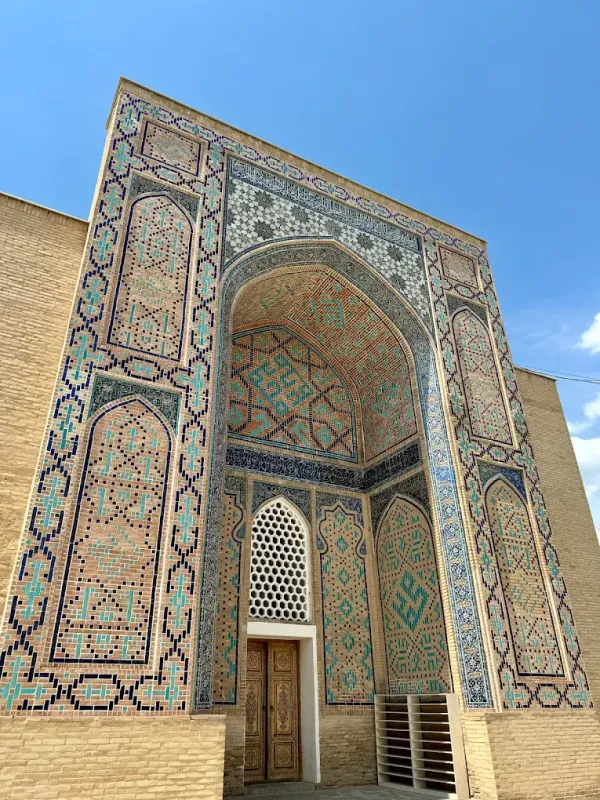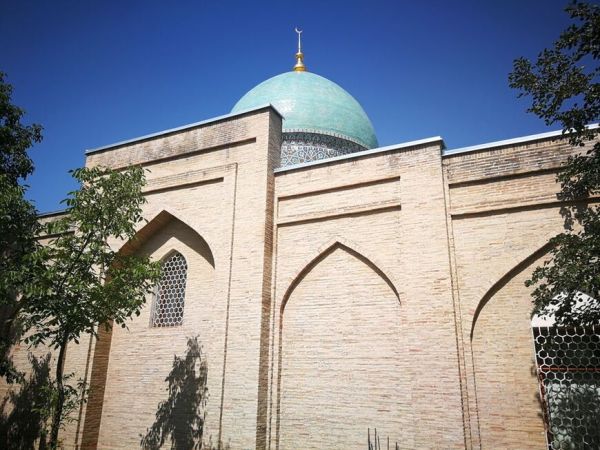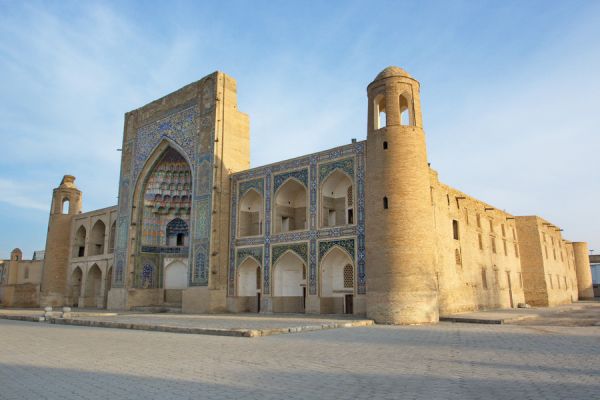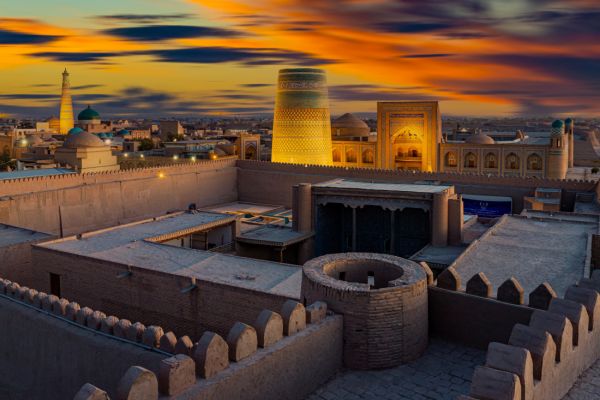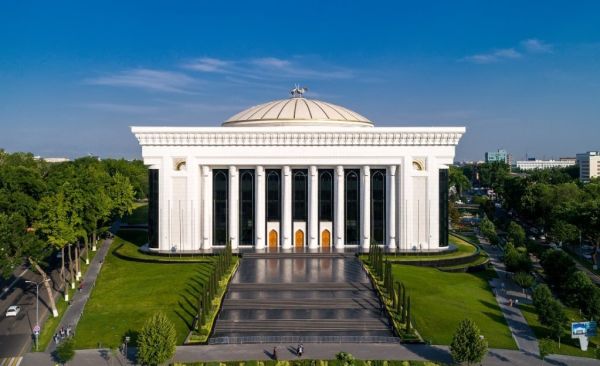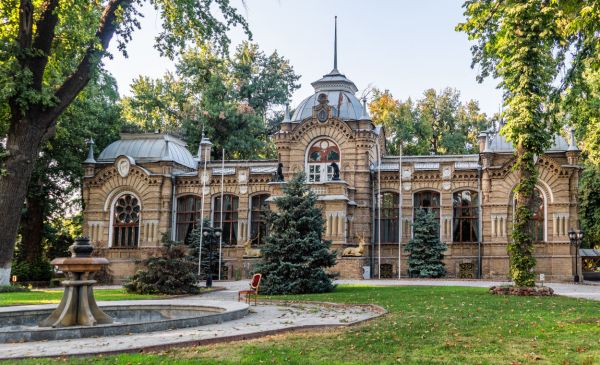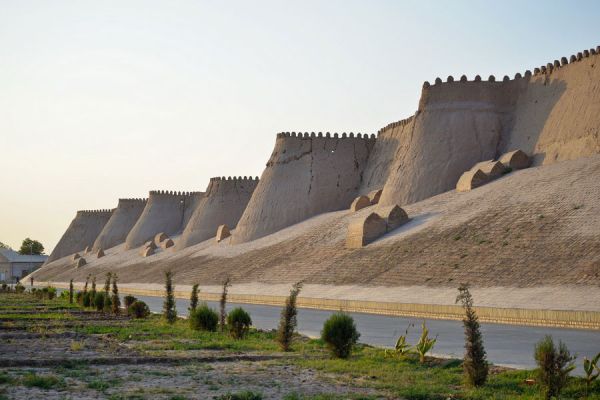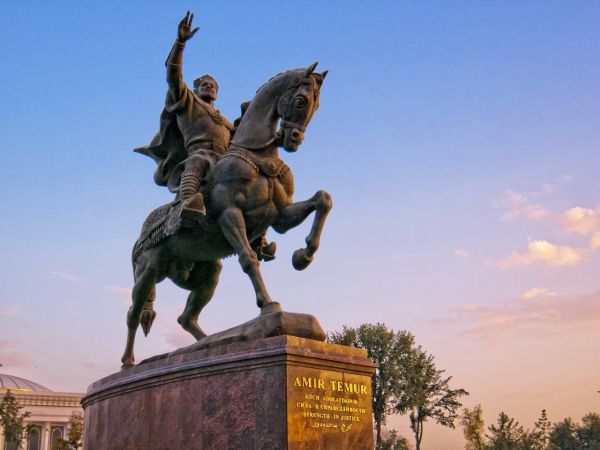Khast Imam Square
Khast Imam (Hazrati Imam) is a cult and architectural complex, the religious center of Tashkent is located in the old city of Tashkent, surrounded by ancient adobe residential buildings.
The complex appeared near the grave of one of the first imams of Tashkent, the famous Muslim scholar Hazrati Imam (his full name is Abu Bakr Muhammad Kaffal Shashi). Hazret Imam, was born in 903 in Tashkent, which at that time was called Madina ash–Shash, in the family of a skilled craftsman-kaffal, that is, an artisan who made intricate door locks. He was named after the companion of the Prophet and the first Caliph. Abu Bakr is renowned as a talented mystic poet, theologian, and expert on the Quran, Hadith, Muslim law, and lexicology. Hazrati Imam died in 976/77. One of the medieval biographers of Abu Bakr of Tashkent in the 12th century wrote about him: "At that time there were no scientists like him in Transoxiana."..
The tomb of Caffalb Shashi has become a popular pilgrimage destination for Muslims and is the main shrine of the complex. In the 16th century, during the reign of the Sheibanids, a magnificent mausoleum was erected over the old tomb of Kaffal Sheikh, which was at that time one of the main shrines of the city. A large, shady cemetery grew up to the south of it. In the middle of the 16th century, the complex consisted of the mausoleum of Kaffal Sheikh and the Barak Khan madrasah, which are combined into a single complex along with two tombs – nameless and Suyunji Khan. In 1579, a new tomb of Sheikh Babakhoji was built in the same area.
In 2007, an entire complex was built on the site of separate disparate buildings on an area of 2 hectares, united by a single purpose and landscape solution. Today, the complex includes the Barak Khan madrasah, Tilla Sheikh Mosque, Muyi Muborak madrasah, Kaffal Shashi tombs, Namazgah Mosque, as well as the largest mosque in Tashkent, Khast Imam, the administrative building of the Muslim Board of Uzbekistan. The complex was named Hazrat Imam (in modern pronunciation, Khast Imam), in honor of Sheikh Kaffal Shashi.
The Muyi Muborak Madrasah was built in the 16th century. It contains the hair of the Prophet Muhammad, which is why the madrasah was named "Muyi Muborak", i.e. the Sacred hair. Currently, the madrasa houses the library of the Muslim Board of Uzbekistan, which houses rare manuscripts and the Quran of Caliph Osman (7th century), the world's oldest manuscript, consisting of 353 very large parchment sheets with the original text of the Quran. The Quran was brought to Uzbekistan by Tamerlanov after his Turkish campaign, was kept in the Bibi Khanum Mosque in Samarkand, then in the St. Petersburg Hermitage, in the Office of Muslims of Russia in Ufa, and finally returned to Uzbekistan.
The Barak Khan madrasah was built in the 16th century. The Spiritual Administration of Muslims of Uzbekistan was located here from 1950 to 2007. Today, the madrasah has been given over to folk artisans. Their workshops are located here, where you can buy their original products and souvenirs.
The mausoleum "Kaffal Shashi" was erected in honor of Abu Bakr ibn Ali ibn Ismail al-Kaffal al-Shashi in the XVI century.. The original forms of the tomb have not been preserved. The mausoleum of Kaffal Shoshi is built in the form of a khanaka (a complex structure consisting of a crypt, mosque and cells).
The Namazgoh Mosque, built in 1865, was considered one of the largest mosques in Tashkent, where the main prayers of the Ramadan-Khayit and Kurban-Khayit holidays were held. Since 1971, the Tashkent Islamic Institute has been located there.
The Khast Imam Grand Juma Mosque was built in 2007 in just 4 months in honor of Tashkent's declaration as the city of Islamic culture.The mosque is a unique symbol of the Tashkent architectural style.: at the entrance to the mosque there is a terrace with twenty carved sandalwood columns. The mosque has two large blue domes decorated with gilding inside, like in the Tillakari madrasah in Samarkand. The window openings of the domes are designed so that the sun's rays constantly penetrate inside the mosque from sunrise to sunset. Two 53-meter-high minarets have been erected at the entrance to the mosque. More than 10 thousand believers can pray in the mosque at the same time.
The Hast-Imam complex has a landscaped park, exotic trees, shrubs and flowers were imported from different countries. During the spring, summer and autumn periods, storks freely roam the territory of the ensemble. And at night, thanks to special lighting, the architectural structures on the territory of the complex evoke a sense of presence in the world of oriental fairy tales.
